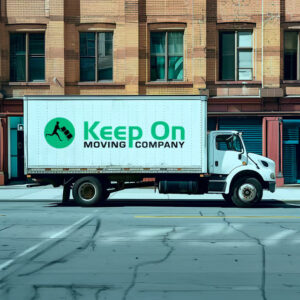For most of us moving house is overwhelming.
You take one look at your belongings and wish you didn’t have so much stuff. If only you could find a few large boxes and toss everything into them without bothering to sort them. But you can’t do that because you know that would damage your valuables.
Moving homes is hard and there are three ways people typically respond:
- Some defer getting their home ready for the event until a few days before the actual moving day. These are the people who end up with lots of missing or damaged items. They often have to pay additional fees to the moving company for the extra work it has to do.
- There are the more organized individuals who start packing early, alone, or with the help of friends. They may also hire a full-service mover to help with the packing. These people have an easier moving experience, with minimal damage to their belongings.
- Finally, there are the highly capable individuals who understand the challenges of moving house but feel confident enough to handle it all by themselves. These are the ones who rent a moving truck and DIY every aspect of the move, including loading and driving the truck.
It is this third group of people we want to talk to today.

There are at least three reasons why people choose to DIY their house move.
- A DIY move helps you save the money you would have spent to hire a moving company, especially if you decide to move your stuff with your own vehicle.
- With a DIY move, you can afford to be more flexible with deadlines. If there is bad weather on your chosen day, you can simply choose another day.
- Finally, a DIY move gives you complete control; you can pack whatever you want. You simply follow your own guidelines.
But, there are things to be aware of when making a DIY move. Like a lot of things in life, a DIY move is not always what it seems to be. Moving your things yourself can end up costing you more than hiring a professional mover if you don’t take all aspects of a DIY move into account, warns Alltrade Properties.
Below we explain some of the hidden costs of DIY moving that many DIYers are not aware of until they are right in the middle of the move. Knowing these potential stresses of DIY moving will help you decide if it is the best option for you.
The Hidden Stresses of DIY Moving to be Aware of
Time pressure
The time demands of a house move are multi-dimensional. Most of us only focus on the time we will spend packing our belongings. But there is more because the average house move involves coordinating activities inside and outside the home, along with your day job, school or business.

Getting the items in an average 3-bedroom home with 4 occupants ready for a move can take as long as 48 hours. This highly conservative estimate does not include canceling or updating various services; readying the home by removing doors and railings; or returning the truck. Before you make that time commitment, consider the opportunity cost of that decision.
Hidden transportation costs
The number one transport cost DIY movers ignore is mileage. This is because they assume that hiring a moving truck is similar to hiring a car; they get unlimited mileage. But this is not the case. When hiring a moving truck, you are typically allotted a distance and after that distance, you will be charged for every additional mile.
This is a problem because you are quite likely to underestimate the size of the truck you need, which will mean doing more than one trip. Another hidden cost is insurance; you need to insure yourself when using a moving truck or you will be open to huge liabilities. The last cost is refueling and cleaning the truck.
The cost of damaged goods
Although meeting a moving company’s specifications for packing your belongings can be a chore, those rules exist for a reason. They make items easier to handle and reduce the likelihood of things getting damaged during the trip.
On a DIY move, your stuff is more exposed to damage. Also, insuring your stuff is easier when you use a moving company than when you DIY your move. Furthermore, in addition to possible damage to your items, there is a greater risk of damage to the moving truck and other road users, because you may pack the vehicle in a way that makes it difficult to handle.
High possibility of personal injury
Injuries are commonplace during a house move. The two most common causes of injury are falls and poor lifting techniques. Most people do not know the right protocols for lifting heavy, bulky, and unwieldy objects. The result is they strain their back in the process. The other major cause of injury is litter; people tripping over items strewn around the home. The compound effect of the injury is time away from work or business, which equals lost income pr opportunities.
Before you decide to DIY your move, ask yourself if you can deal with these stresses. Only go ahead if you have ways to solve the problems.






